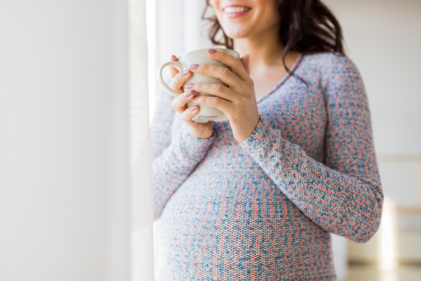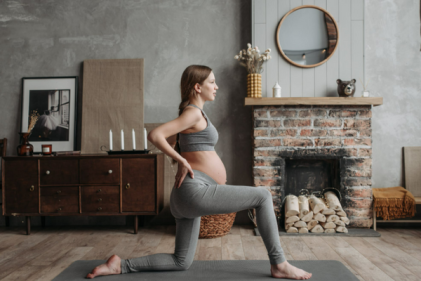As labour starts you may find that you become quite restless and are finding it hard to get comfortable sitting down. Moving around and keeping busy could make you over tired before labour is fully established , so make sure to have little rests – sitting or lying down . If your contractions wake you from your sleep at night try to relax for as long as possible before getting up.
As the contractions start to get stronger you’ll need to focus on your breathing , what’s happening to your body and your baby. Finding a position that helps you cope with your contractions is important. Remember that it’s well established that women who adopt upright positions and move around in labour , have shorter labours than those who are confined to bed and push when that are flat on their backs. Being in an upright position can help lessen the pain of a contraction and make it easier for your partner to support you during labour (ie. Massaging your back or breathing with you in labour ).
Positions such as these may help you, and your Midwife can help you achieve these positions when in Labour:
- lean onto a work surface or the back of a chair
- put your arms round your partner's neck or waist and lean on him
- lean onto the bed in the delivery room (with the height adjusted for your comfort) or a window-sill
- kneel on a large cushion or pillow on the floor and lean forwards onto the seat of a chair
- sit astride a chair, resting on a pillow placed across the top
- sit on the toilet, leaning forwards, or sit astride, leaning onto the cistern
- go onto all fours
- kneel on one leg with the other bent.
Remember that rocking your hips backwards and forwards or rotating them in a circle can help your baby move through your pelvis and to comfort yourself.
Disadvantages to lying down in labour can include: (MIDIRS 2008)
- more painful contractions (Molina et al 1997)
- less effective contractions (Lewis et al 2002; Andrews and Chrzanowski 1990; Flynn et al 1978)
- longer labour (Andrews and Chrzanowski 1990)
- reduced blood flow to your baby, particularly if you lie flat on your back (Ryo et al 1996; Ang et al 1969 cited Gupta et al 2004)
- narrower passage through the pelvis for your baby (Michel et al 2002; Russell 1982 cited Gupta et al 2004)
Upright positions help make your contractions efficient and you feel in control. If you want to change position as your labour progresses, you will need to ask your partner or midwife to help you. When you are in very strong labour, you will probably find that you don't want to move around a great deal (Simkin and O'Hara 2002). You'll need all your strength simply to cope with each contraction as it comes along. Don't worry- you will naturally find the position that suits you best. Keep rocking, leaning forwards during contractions and straightening up in between. If you feel it helps you cope, ask your birth partner or midwife to massage your lower back with each contraction.
If you get really tired and bed seems like the best place to be, use pillows or wedges to lie down on your side (MIDIRS 2008: 9). Remember that contractions can be more painful in horizontal positions (Molina et al 1997; Simkin and O'Hara 2002), so you'll need to balance your need for rest with how you're coping. If you feel rested after a little while, push yourself up with your hands into a sitting position or onto all fours and get into a comfortable upright position again.
If you get really tired and bed seems like the best place to be, use pillows or wedges to lie down on your side (MIDIRS 2008: 9). Remember that contractions can be more painful in horizontal positions (Molina et al 1997; Simkin and O'Hara 2002), so you'll need to balance your need for rest with how you're coping. If you feel rested after a little while, push yourself up with your hands into a sitting position or onto all fours and get into a comfortable upright position again.
Gráinne Grundy RGN RM - Mama & Me
Gráinne holds monthly antenatal classes in Kildare www.MamaAndMe.ie




